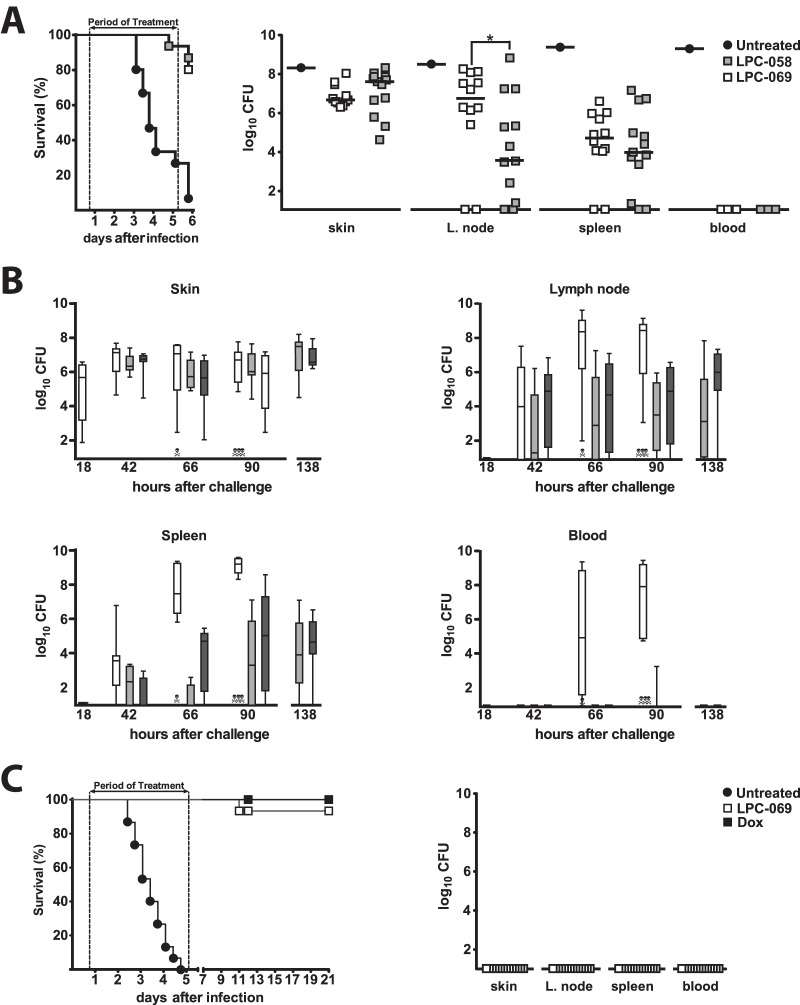FIG 4 .
LPC-069 confers protection against plague. Eight- to 9-week-old OF-1 female mice were intradermally inoculated with 100 CFU Y. pestis. Eighteen hours later, mice were given a 5-day course of intravenous LPC-058 at 10 mg/kg q8h, LPC-069 at 40 mg/kg q8h (A and B) or 200 mg/kg q8h (C), or doxycycline (Dox) at 50 mg/kg q12h (C). (A) The survival of mice treated with LPC-058 (gray squares) or LPC-069 (white squares) and nontreated mice (black circles) was recorded every 8 h. The survival curves plotted for treated mice differed significantly from the curve plotted for untreated mice (P < 0.0001 in a log rank test). Bacterial loads in the survivors’ skin, draining lymph nodes, spleen, and blood were determined 18 h after the end of the treatment. Horizontal bars indicate the median of the individual data points. A total of 15 mice were used. (B) Bacterial loads in the skin, draining lymph nodes, spleen, and blood of eight mice at the start of treatment and in eight mice treated with LPC-058 (light gray boxes) or LPC-069 (dark gray boxes) and nontreated mice (white boxes) 24, 48, and 72 h after the start of the treatment (i.e., 42, 66, and 90 h postinfection). The bacterial loads given at the 138-h time point are those from the experiment shown in panel A. The boxes represent the interquartile range of the bacterial load, and the lines crossing the boxes indicate the median bacterial load. The whiskers represent the lowest and highest bacterial loads. Dead mice are indicated by skulls and crossbones. A two-way analysis of variance revealed that treatments with LPC-069 or LPC-058 were associated with significantly (P < 0.02) lower colonization of the lymph nodes, spleen, and blood, relative to nontreated controls. (C) Survival of nontreated mice (black circles) or mice treated intravenously with LPC-069 at 200 mg/kg q8h (white squares) or doxycycline (black squares) at 50 mg/kg q12h for 5 consecutive days. LPC-069 protected mice against plague as efficiently as doxycycline did (with 15 and 14 out of 15 survivors at day 21 postchallenge, respectively; P > 0.5). Skin, lymph nodes, spleen, and blood from all survivors were sterile. A total of 15 mice were used.

